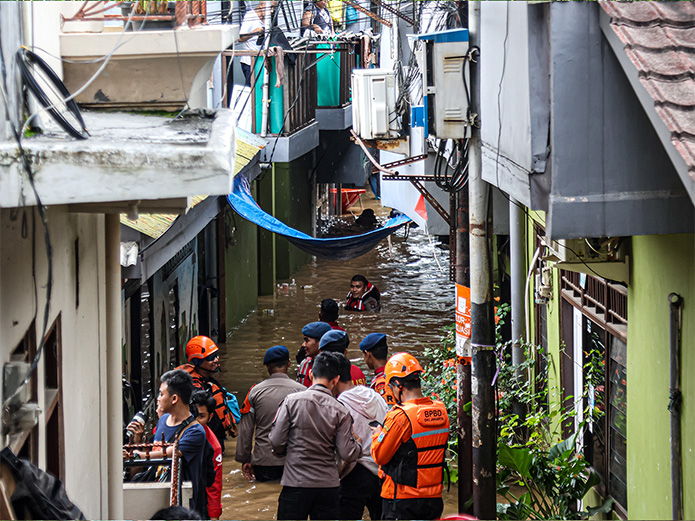TO INSURE OR NOT TO INSURE, THAT IS THE QUESTION: WHY PROPERTY INSURANCE MATTER FOR URBAN CLIMATE RESILIENCE AND WHY SOME URBAN AREAS ARE BECOMING “UNINSUARABLE” JUST WHEN WE NEED INSURANCE PROTECTION MOST
21/7/25

Security and Rescue officers evacuate residents after flood waters hit their homes in March 2025 in Jakarta. Photo credit: Wulandari Wulandari via Shutterstock
Property insurance is increasingly recognized as an enabler of not only post-disaster recovery, but also affordable housing, financial resilience, and the wider climate adaptation agenda for individuals and communities. In many cities and communities, however, climate change and other factors such as inflation and overdevelopment are increasing the risk of loss and damage from extreme weather hazards. In response, insurers are raising the premiums they charge for property insurance, or in some cases, withdrawing from vulnerable geographies completely—just at a time when insurance is becoming more important to cities as a tool in their climate adaptation toolkits. Through a conversation among three insurance experts from academia and industry, this article unpacks drivers of uninsurability and explores potential shifts in how responsibility for property risk is shared across an “ecosystem” of public institutions and private sector companies. It offers a practitioner’s look at the role of property insurance in urban climate adaptation and insight into how property insurance may evolve in an uncertain climate future.





Watch the video here:


